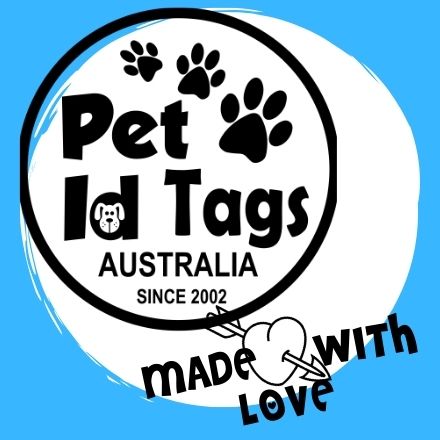Cavalier King Charles Spaniel

Origin
In its heyday, this breed was known as a 'comforte dog' and doctors even wrote prescriptions with this little dog as the remedy. The original Cavalier King Charles Spaniel was developed from the toy spaniels pictured in the work of 16th, 17th and 18th century painters such as Van Dyck, Titian, Stubbs and Gainsborough. These portraits show a small spaniel with a flat head, high set ears, almond shaped eyes and a pointed nose. They were very common as a ladies’ pet and were used to warm laps during cold carriage rides and while waiting about in chilly castles. Another job the dogs had was to attract fleas off their mistresses so that the owner would not get bitten and die of the plague. The royal name, 'King Charles Spaniel' was bestowed during the reign of King Charles II, who was so fond of his spaniels he could not be parted from them. He made a decree that King Charles Spaniels must be allowed in any public place, including the House of Parliament. This decree is still in the law books today. By 1800, the snub nose variety had taken over in popularity and the original spaniel was nearly lost. Only the Duke of Marlborough kept a line alive, breeding them at Blenheim castle. This later became the Blenheim variety - red and white dogs with a lozenge shaped mark on the forehead. In 1926, an American, Roswell Eldridge, tried to re-establish the original dog of the Cavaliers by offering a prize for a dog with the appearance of the dogs in the historical portraiture. The prize was to be given out at Crufts and was for the then substantial sum of £25. There were not a lot of people interested at first, but in 1928 Mostyn Walker produced a dog with a longer muzzle, longer coat and slightly larger and racier body. She won the prize and went on to help start the Cavalier King Charles Breed Club for people interested in promoting the old variety of the King Charles Spaniel. Throw backs to the longer faced dogs occurred very quickly and by 1945 the Kennel Club offered the breed full and separate status. In the United States, the breed club was founded in 1956 and the breed has as recently as 1996 moved from the miscellaneous to the toy group, no longer being listed as a rare breed. A strict code of ethics governs the breeding programme in the United States and it is hoped that will protect the breed from the insults of puppy mills and indiscriminate breeding.

Description
A small spaniel with a short, but definite muzzle, large brown eyes and silky fur.
| Size | Small |
| Colour |
The colours are black and tan, ruby, red and white (Blenheim) and tricolour (chestnut markings on a pearl white background). |
| Coat Length | Medium Long |
| Weight/Height Range | The average height of both dogs and bitches is between 30 to 33 cm and the weight is between 5.5 and 8 kg. |
| Ailments |
Cavies are prone to heart murmurs, cataracts and subluxating patellas (slipping knee caps.) Cavaliers also have the highest incidence of any breed of Mitral Valve Disease. Pups should only be bred from specimens of the breed who have shown no sign of the disease at the older age of 3 - 5 years - a bit late for some to wait to start breeding, but perhaps necessary in order to eradicate the disease from the breed.
|
| Breed Classification | The Cavalier King Charles Spaniel belongs to the toy group and is used as a companion and seen in the show-ring. |
Feeding & Ownership
These dogs are relatively easy to feed, not requiring any supplements or special diets. The main thing to remember with the Cavalier is not to overfeed as they do have a tendency to become overweight.
| Food Cost | $5 to $10 |
Personality
This is an affectionate, undemanding and easy to train family dog.They are excellent with children and the elderly. They are not excessive barkers but will announce strangers. They are no guard dogs however, as they greet most people warmly. Cavaliers get along with everyone, including cats and other small pets. Being relatively small and easy going, they make good travel companions.
| Intelligence |
This is an affectionate, undemanding and easy to train family dog. Eager to please, it is wonderfully simple to train and can do well in obedience trials. It is a clean dog and will housebreak quickly. |
| Energy | Medium |
| Suitability for Children | High |
| Tendency to Bark | Medium |
| Overall Exercise Requirement | They will adapt to whatever amount of exercise you feel able to give but do need some regular exercise or they will put on the pounds. |
| Suitability as a Guard Dog | Low |
| Ease of Transportation | High |
| Level of Aggression | Low |
| Other Animal Compatibility | High |
Grooming
Cavaliers should be groomed thoroughly once a week. The nails and the hair between the pads of the feet should be trimmed once a month. This is a shedding dog but good grooming should keep the hair load on your furniture fairly low. Special attention must be given to the ears are they are drop ears and there is very little air circulation. No trimming is necessary and is, indeed, disallowed for the show ring.
| Grooming Requirements | Once a week |
| Amount of Hair Shed | Little |

 MAKE SURE YOUR PET IS EASILY IDENTIFIED
MAKE SURE YOUR PET IS EASILY IDENTIFIED 